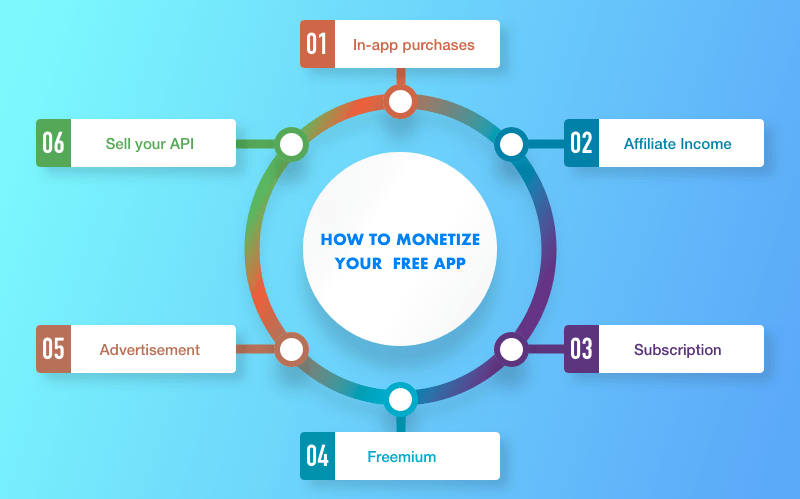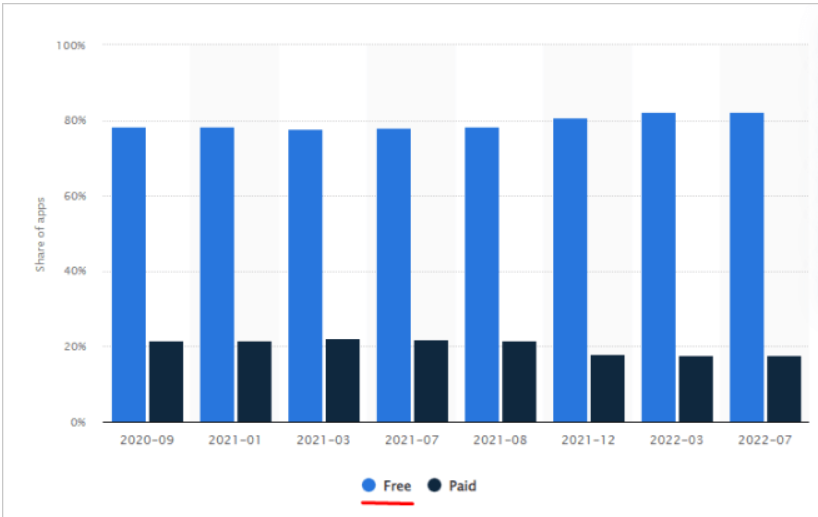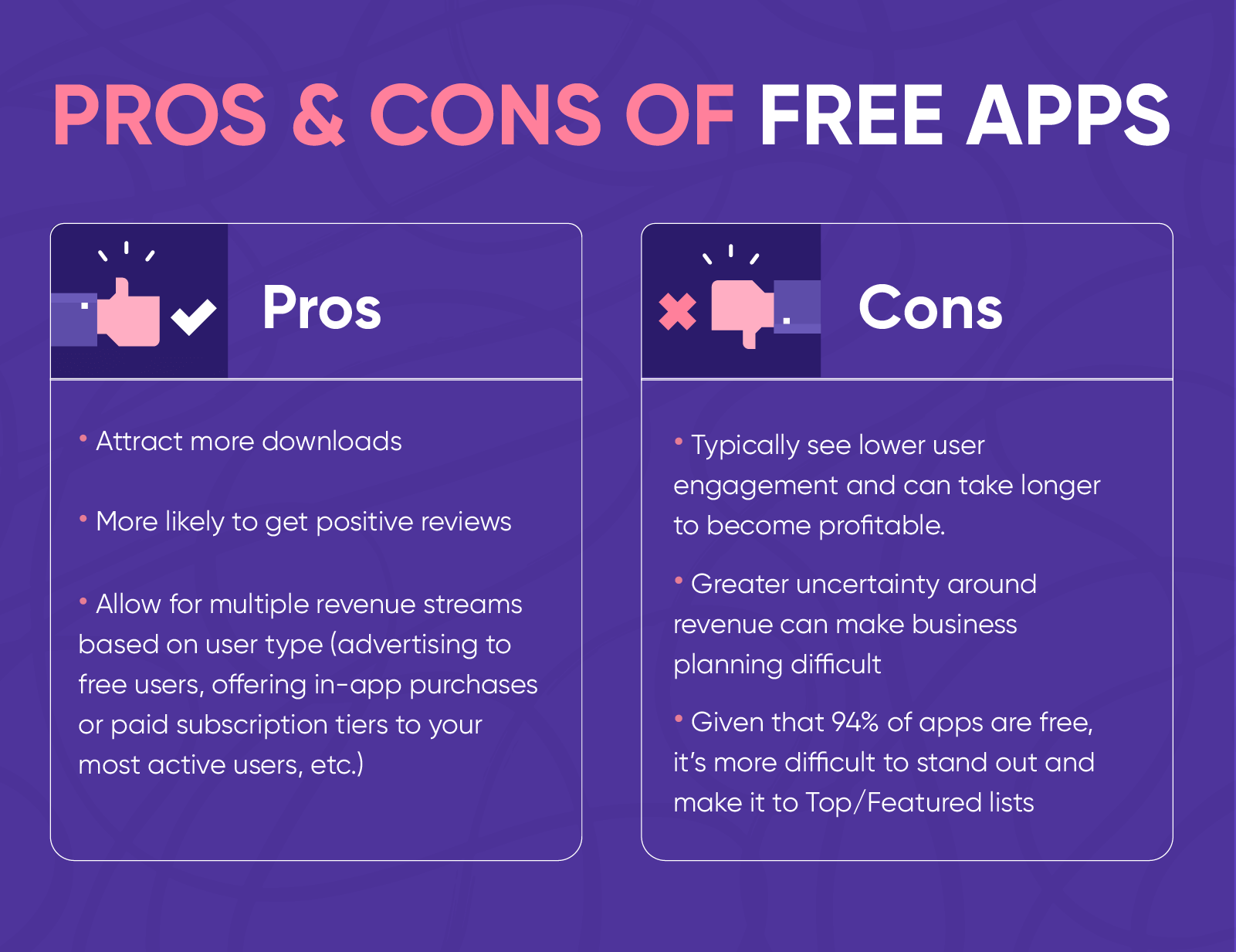We all like free things, and there’s no denying the convenience of free apps.
Whereas you once needed to buy a full-fledged software suite to perform a certain task, nowadays, that same app can often be found for free on your phone or tablet.
But How do Free Apps Make Money for companies when their product is given away for nothing?
Join us to explore the various strategies developers use to turn even their ‘free’ apps into steady revenue streams.
Overview: How Free Apps Make Money?

There are a few different ways that free apps can make money.
One of the most popular methods is through in-app purchases, which allow users to purchase additional features or items within an app.
For instance, you could offer users the ability to unlock new levels, characters or other content for a fee.
Similarly, you could release special versions of the app that offer more features for a one-time fee.
Another popular method is to offer ads within your app.
How Free Apps Make Money These could be banners, interstitials, videos, or even rewarded videos, all of which can generate revenue from users viewing and interacting with them.
While this option may not be as lucrative as in-app purchases, it does allow you to reach a wider audience and can provide a steady stream of revenue for your app.
Finally, you could also look into affiliate programs or working with sponsors.
With these methods, you could get paid to promote products and services within your app.
This is a great way to make money if you have an established user base, as it allows you to monetize your existing users without charging them.
In general, free apps can make money in a variety of ways.
How Free Apps Make Money: Depending on the specific needs and goals of your app, you may be able to generate income through any combination of these methods.
With some research and experimentation, you should be able to find the right approach that works best for you.
And don’t forget: you can always upgrade users to a premium version of your app later.
Most Popular Revenue Models:

1. Subscriptions:
This model allows users to pay a fixed fee for a subscription package that promises the user access to various services and benefits within the app.
These can range from premium content to added features or discounts on goods or services available within the app.
It is important to note that customers are more likely to subscribe if they feel they are getting a good deal and that the benefits outweigh the costs.
2. Freemium:
This model allows users to enjoy an app’s basic features for free, but to access premium content or services, they must upgrade through a paid subscription.
The idea is to entice users with value-added services that they can only get if they upgrade.
3. In-App Purchases:
This model allows users to purchase items from within the app itself, such as virtual currency, additional levels or lives in a game, or bonus content, such as exclusive music tracks or videos.
It is important to ensure that the purchases are clearly labelled and priced competitively.
4. Advertising:
This model involves displaying ads within the app that users can view in exchange for rewards or points.
It is important to ensure that the ads are relevant to your user base and hidden and non-intrusive.
Ads should be clearly labelled and easy to opt out of if desired.
5. Sponsorship:
This model involves partnering with a brand or company to feature their products or services within the app in exchange for a fee or percentage of revenue.
It is important to make sure that the content and products promoted are relevant to your users and do not detract from their experience.
6. Affiliate Marketing:
This model involves partnering with other companies or websites to promote their products or services within the app in exchange for a commission.
It is important to ensure that the products or services being promoted are relevant to your user base and do not detract from their experience.
7. White-Label Solutions:
This model involves taking an existing app and “white labelling” it with a different brand or company.
The end user will be unaware that another company developed the app, and all revenue generated goes to the white labeller.
8. Physical Goods:
This model involves allowing users to purchase physical goods from within the app, such as clothing or accessories.
It is important to ensure that the products are of good quality and clearly labelled with appropriate prices.
9. Digital Goods:
This model involves allowing users to purchase digital goods such as music, videos, or books from within the app.
It is important to ensure that all purchases are securely processed and customers have access to their content immediately after purchase.
10. Crowdfunding:
This model involves allowing users to donate money towards a project or cause, either through in-app donations or via an external platform such as Kickstarter.
It is important to ensure that all funds raised are used for their intended purpose and the donors have access to updates about how their contributions have been used.
11. Data Monetization:
This model involves collecting user data such as demographics, usage habits, or location and then selling this data to third-party companies.
How Free Apps Make Money: It is important to ensure that the data is collected securely and with the user’s consent.
A few Features Of How Free Apps Make Money:

App developers can monetize their free apps online in several different ways, including in-app purchases, advertising, and subscriptions.
1. In-app Purchases:
In-app purchases provide a way for app developers to learn how free apps make money and offer additional content and services within their existing apps.
This can include anything from extra levels or characters in gaming apps to downloadable content in podcast apps.
In-app purchases can be used to offer users access to premium features and content, allowing developers to monetize the free version of their apps.
2. Advertising:
Advertising is one of the most commonly used methods for free app developers to generate revenue.
Ads are usually placed within the app itself or as part of the app loading process.
Ads can be static images or videos or interactive, offering users the chance to participate in surveys and polls or receive other incentives for engaging with them.
Advertising networks often pay developers on a cost-per-click basis, meaning that developers receive payment each time an ad is clicked.
3. Subscriptions:
For certain types of apps, subscription plans can be a great way to monetize them.
Subscriptions offer users access to premium content and features, such as How Free Apps Make Money, while developers receive regular payments from their customers.
This type of revenue model is particularly popular amongst music streaming apps and the gaming industry, where users pay a subscription fee in exchange for access to exclusive content.
Overall, free apps offer a great way for developers to earn money from their work.
App developers have a range of options for monetizing their free apps, including in-app purchases, advertising, and subscriptions.
By implementing one or more of these strategies, app developers can ensure that their hard work pays off.
FAQs
Free apps generate revenue through various methods like advertising, in-app purchases, subscriptions, sponsored content, and affiliate programs. Advertising involves displaying ads or linking to sponsors. In-app purchases allow users to buy virtual goods, while subscriptions offer access to content on a recurring basis. Sponsored content showcases products and services within the app, and affiliate programs pay for user referrals to third-party sites. Each method has its own pros and cons, so it's important to research which is best for the specific app.
When monetizing free apps, consider using user data and offering premium versions. User data helps target the audience for increased revenue. Additionally, providing a premium version can generate extra income, with the free version offers limited features and the full version requiring payment for all features.
Tracking metrics is essential for understanding the success of your monetization efforts. Measure revenue, user engagement, and downloads to evaluate strategies and monitor user interaction with monetization options. 😉 How do free apps make money?
🎁 Are there any other ways to monetize free apps?
🤞 How can I measure the success of my monetization strategy?
Quick links:
- Top Best Real Online Jobs For Making Quick Money
- Can You Make Money From Blogging? Simple Ways to Earn From Your Blog
- Business Ideas with Low Investment in India That Are Most Profitable
- How to Market a New Service Effectively?
Conclusion: How Free Apps Make Money In 2024?
Free apps make money in a variety of ways, business from advertising to charging for premium features or content.
Developers who are looking to monetize their app should carefully consider the best way to do so given their target audience and the nature of their app.
Some users are willing to pay for an ad-free experience, How Free Apps Make Money, while others don’t mind ads as long as they’re not intrusive.
Ultimately, it’s up to the developer to decide what will work best for their app and their users.

